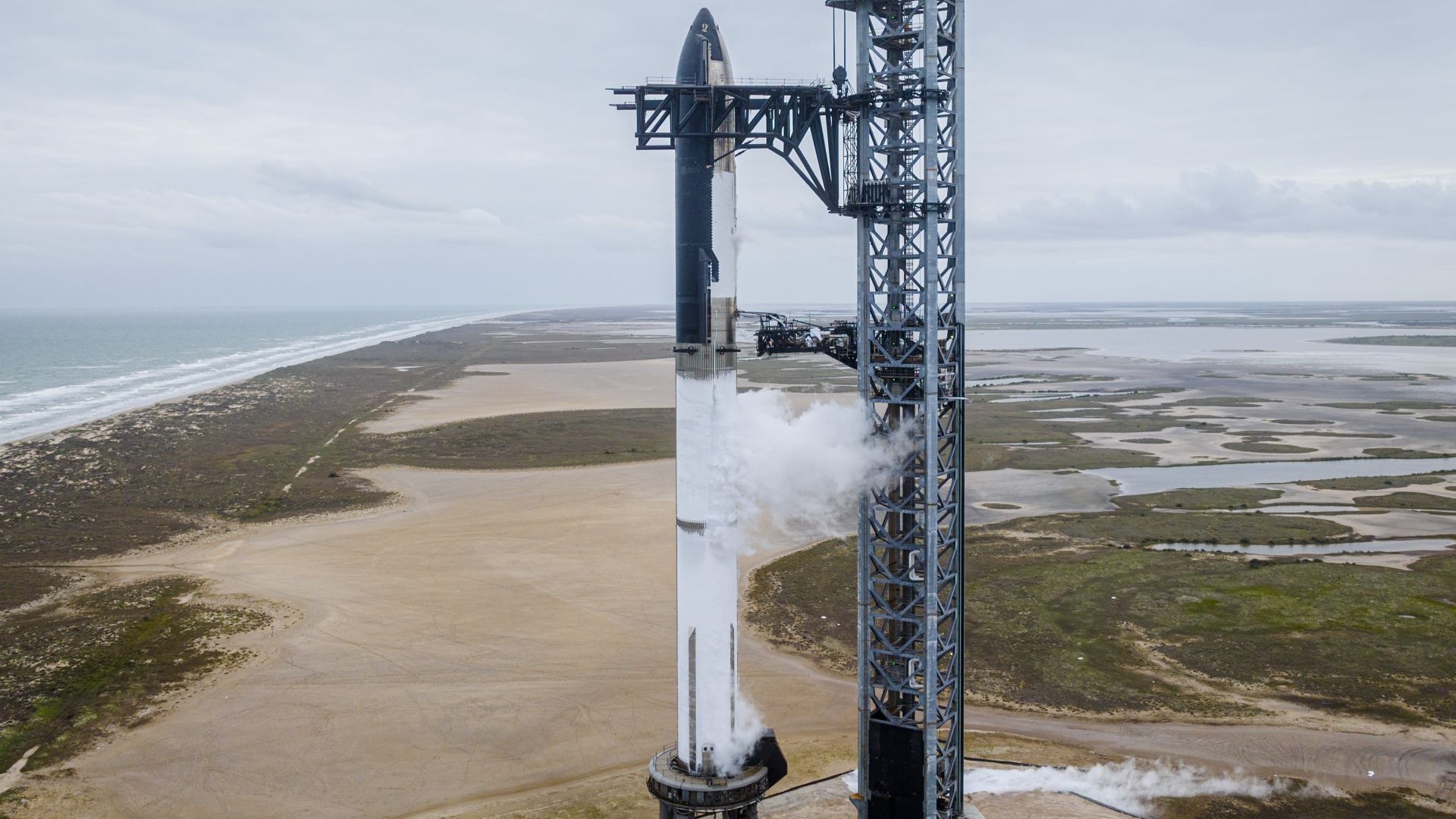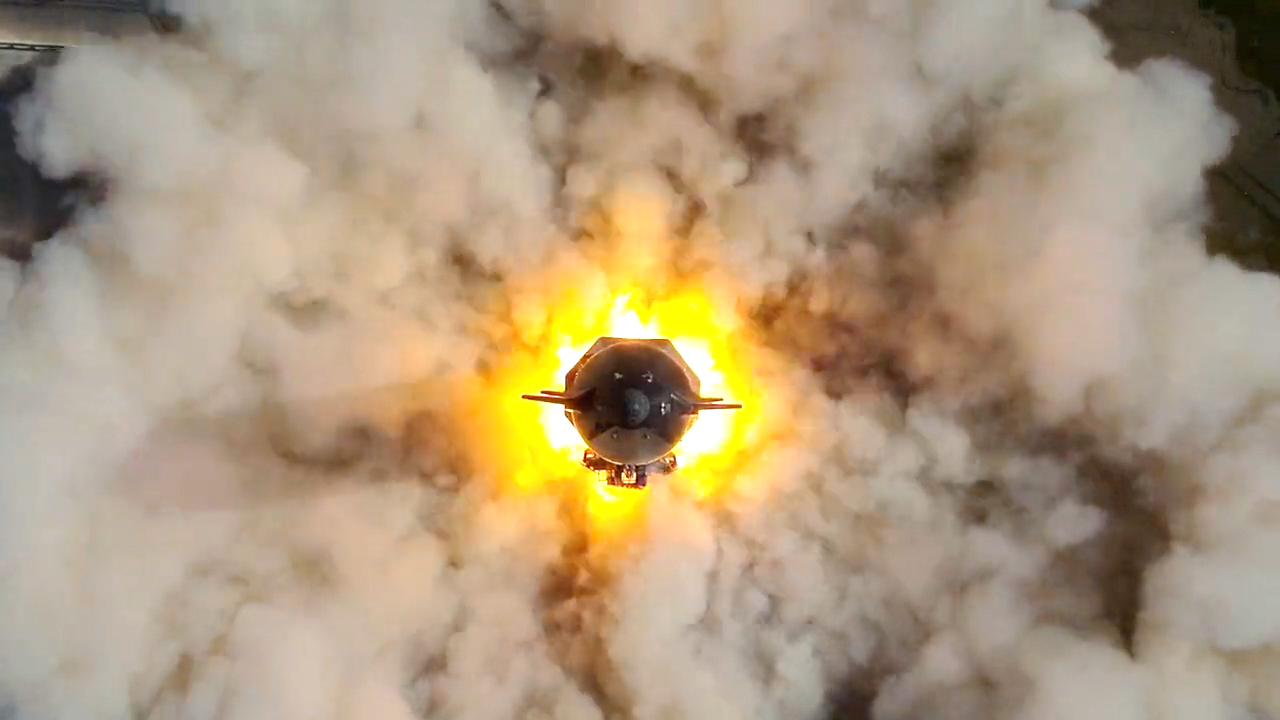
We could be just a month away from the first-ever Starship orbital launch attempt.
SpaceX will try to send its huge Starship rocket to Earth orbit for the first time in March, provided the vehicle checks a few more boxes successfully, company founder and CEO Elon Musk said over the weekend.
"If remaining tests go well, we will attempt a Starship launch next month," Musk said via Twitter on Saturday (Feb. 4). "Success is far from certain, but excitement is guaranteed," he added in another tweet, this one on Sunday (Feb. 5).
Related: SpaceX's 1st orbital Starship looks supercool in these fueling test photos
SpaceX is developing Starship to take people and cargo to the moon and Mars, and to perform a number of other spaceflight tasks as well (such as lofting most of the company's big next-generation Starlink 2.0 internet satellites).
Musk has said that the fully reusable vehicle — which consists of a giant first stage called Super Heavy and a 165-foot-tall (50 meters) upper-stage spacecraft known as Starship — could make Mars colonization economically feasible down the road.
The orbital test flight is a huge step along that ambitious path. If all goes according to plan, a Super Heavy prototype named Booster 7 will launch an upper-stage variant called Ship 24 skyward from Starbase, SpaceX's South Texas facility. Booster 7 will come down in the Gulf of Mexico not long after liftoff, but Ship 24 will make it all the way around Earth, circling our planet once before splashing down in the Pacific Ocean near the Hawaiian island of Kauai.
Get the Space.com Newsletter
Breaking space news, the latest updates on rocket launches, skywatching events and more!

Booster 7 and Ship 24 have already completed a number of milestones in the leadup to launch. For example, the stacked duo passed a crucial fueling test on Jan. 23, in which SpaceX pumped more than 10 million pounds (4.5 million kilograms) of propellant into the giant, stainless-steel vehicle.
Two days later, SpaceX pulled Ship 24 off the stack to help gear up for one of the biggest remaining tests, which will likely happen soon — a full 33-engine "static fire" with Booster 7 on Starbase's orbital launch mount.
Booster 7 has already performed multiple static fires, a common prelaunch test in which engines are briefly lit while a vehicle remains anchored to the ground. But the booster has never ignited more than 14 of its 33 Raptor engines at a time, so the coming trial will be a big leap.
Ship 24 has ignited all six of its Raptors, pulling off the feat during a September 2022 static fire.
Starship hasn't flown for nearly two years, and its most recent jaunt was but a hop compared to the coming orbital test. In May 2021, a three-engine upper-stage prototype called SN15 soared about 6.2 miles (10 kilometers) into the skies above Starbase before coming back down to Earth for a vertical landing.
Mike Wall is the author of "Out There" (Grand Central Publishing, 2018; illustrated by Karl Tate), a book about the search for alien life. Follow him on Twitter @michaeldwall. Follow us on Twitter @Spacedotcom or on Facebook.
Join our Space Forums to keep talking space on the latest missions, night sky and more! And if you have a news tip, correction or comment, let us know at: community@space.com.

Michael Wall is a Senior Space Writer with Space.com and joined the team in 2010. He primarily covers exoplanets, spaceflight and military space, but has been known to dabble in the space art beat. His book about the search for alien life, "Out There," was published on Nov. 13, 2018. Before becoming a science writer, Michael worked as a herpetologist and wildlife biologist. He has a Ph.D. in evolutionary biology from the University of Sydney, Australia, a bachelor's degree from the University of Arizona, and a graduate certificate in science writing from the University of California, Santa Cruz. To find out what his latest project is, you can follow Michael on Twitter.









